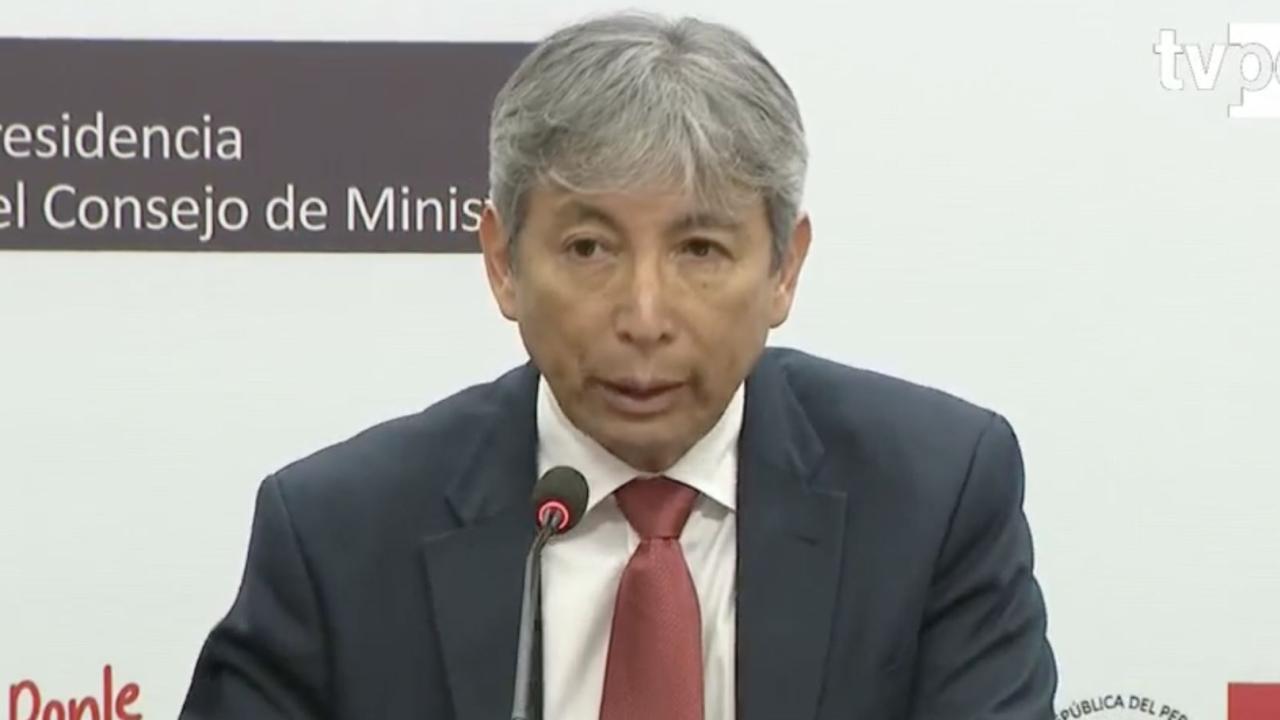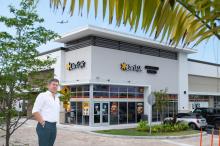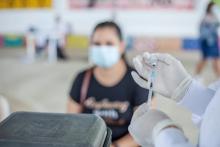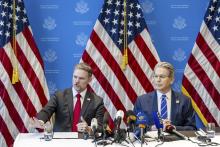
Minister Luis Arista said inflation projections are around 2% and the exchange rate is between 3.7 and 3.8 soles per dollar.
Peru's Minister of Economy and Finance, Luis Arista Arbildo, said today that the country's economic growth projection for the current year should be a little more than 3%, after highlighting that 2024 was a very good year for the Peruvian economy.
This was stated after the conference of the first Council of Ministers of 2025, at the Government Palace.
“For 2025, in general terms, we expect growth of a little more than 3 (percent), but since we are at the beginning of the second business day of the year, what I would say is that our projections for liabilities are around three,” he said.
"But we have to work harder, we have to organize ourselves, because the growth of three is not enough for us," added the head of the Ministry of Economy and Finance (MEF).
He said that according to the Minister of Labor and Employment Promotion, the country will have a demand from employers for around 470,000 jobs.
"But we have much more, with that we are reducing the unemployment rate, but let's not forget that approximately 350,000 new young people enter the Peruvian labor market every year," he said.
He also said that if we add to this demand for labour migration from other countries to Peru, and latent unemployment, then we need to grow more to generate more work, more employment, more quality, more wages and greater well-being for the population.
Private investment
“So, our 3 percent (economic) growth is not enough. We urgently need to grow at rates between 5, 6 or 7 percent, and for that, what do we need? We need to attract private investment,” said Minister Arista.
In this regard, he stressed that 80% of the investment made in the country is private and only 20% is public, which is why it is important to attract private capital.
“And how do we attract private investment? We attract private investment when we show them the solid macroeconomic pillars that the country has, when we show them a serious economy that does not change its regulatory framework, its normative framework, when we demonstrate that there is institutionality, when we respect the agreements, the treaties, the commitments that the country has,” he explained.
"When we show investors that we are a serious country, that we do not establish interest rate controls or exchange controls or restrictions on the repatriation of resources, when we sign free trade agreements with the largest number of countries possible, now we are incorporating, for example, India, Indonesia, the Philippines," he added.
“When we signed treaties to avoid double taxation, we have two or three ready, one is with France, another is with the United Kingdom and the other is with China, which should be signed in 2025, that is what allows us to attract private investment, and we are focused on that,” he stressed.
Respect for the institutional framework
In this regard, he particularly thanked and highlighted the leadership of the President of the Republic, Dina Boluarte, in the sense that she has respected the institutional framework.
"She is against putting controls on interest rates, regulations on the repatriation of capital. She prefers the free market because it is the only way to guarantee the confidence of investors from the rest of the world so that they come to invest in Peru," he said.
“We continue to work along those lines, always trying to show the country the best we have every day to show investors that this is a reliable country, a country that provides maximum facilities to all those who want to take a risk here, because we need to improve our infrastructure, we need to improve the quality of life of our population. And as I told you, the only way to grow is with investment,” he explained.
In this regard, he pointed out that inflation projections are around 2% and the exchange rate is between 3.7 and 3.8 soles per dollar.
He also said that Peru's trade balance amounts to a monthly surplus of US$2 billion and will end 2024 with an annual trade surplus of US$24 billion.
“As a result of this, our international reserves are also increasing, which at the end of the year (2024) will be around US$ 84 billion and all of this means a greater supply of dollars. All of this means that the exchange rate is the most stable in Peru compared to all of Latin America and this stability also allows us to maintain price stability in all of the consumer goods that we have,” he indicated.
Minister Arista said that a very variable and fluctuating exchange rate makes all imported products more expensive and ends up affecting the entire population that consumes many imported goods that are inputs for bread-and-butter products.
He also expects total investment in the country to grow at a rate of 4.7% and "hopefully we will reach a higher rate, close to 7%."
"This year is a difficult year, it is complicated, it is a year where there will be a lot of political noise, but we must not neglect the economic part and what is up to us, we are going to try to work on these issues with the utmost seriousness," he said.
“Above all, always keeping in mind that what investors are looking for is stability, and that is what we want to offer the world,” he said.
Growth in 2024
On the other hand, the head of the Ministry of Economy and Finance highlighted that 2024 was a very good year for the Peruvian economy.
“We have grown at a rate of 3.2%. We are waiting for the data from the National Institute of Statistics and Informatics. Peru's growth in 2024 will probably be between 3.2 and 3.3%,” he said.









